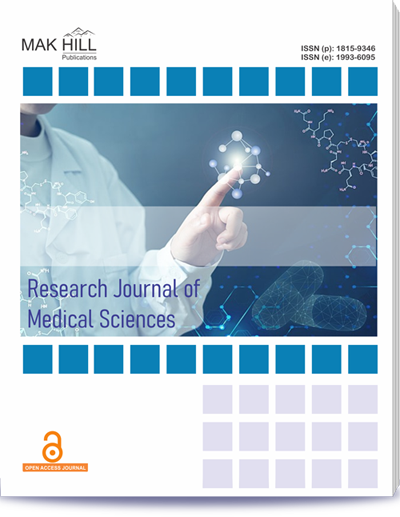
Research Journal of Medical Sciences
ISSN: Online 1993-6095ISSN: Print 1815-9346
151
Views
21
Downloads
Abstract
The prevalence of breast cancer is escalating in contemporary society, with 80% of lesions being non‐malignant. Traditional clinical examination or investigations lack consistent reliability in detecting Benign Breast Lesions (BBL). However, when clinical examination, breast Ultrasonography (USG) and Fine Needle Aspiration Cytology (FNAC) Histopathological Examination (HPR) are combined, the diagnostic accuracy substantially improves. This study aimed to investigate the roles of these modalities in diagnosing benign breast. 47 female patients with BBL were included. A comprehensive patient history was obtained to identify relevant risk factors and chronological recording of complaints was performed. Subsequently, clinical examination was conducted to assess various presentation forms and USG and FNAC/HPR were carried out. The study revealed a higher incidence of benign lumps in the 11‐20 age group. Among the patients, most reported a breast lump, followed by pain and nipple drainage. The majority of these lumps were 3 cm in size, with Fibroadenomas being the predominant pathology. Majority of the lesions were isolated. FNAC, conducted in all patients, yielded a 100% diagnostic rate. While USG effectively distinguished cystic from solid tumors, the typing of the lesion had limitations, although Fibroadenomas could be reliably diagnosed. The integration of clinical examination, USG, and FNAC in the diagnostic process optimizes the accuracy of BBL diagnosis. Employing this triple assessment approach helps in avoiding unnecessary procedures for benign lesions.
How to cite this article:
Saket Kale, Kamlesh Agarwal, Himani Rai and Maya Nehra. Evaluation of Clinical, Sonographical and Histopathological Characteristics of Benign Breast
Conditions: A Comparative Study.
DOI: https://doi.org/10.36478/10.59218/makrjms.2023.12.444.447
URL: https://www.makhillpublications.co/view-article/1815-9346/10.59218/makrjms.2023.12.444.447